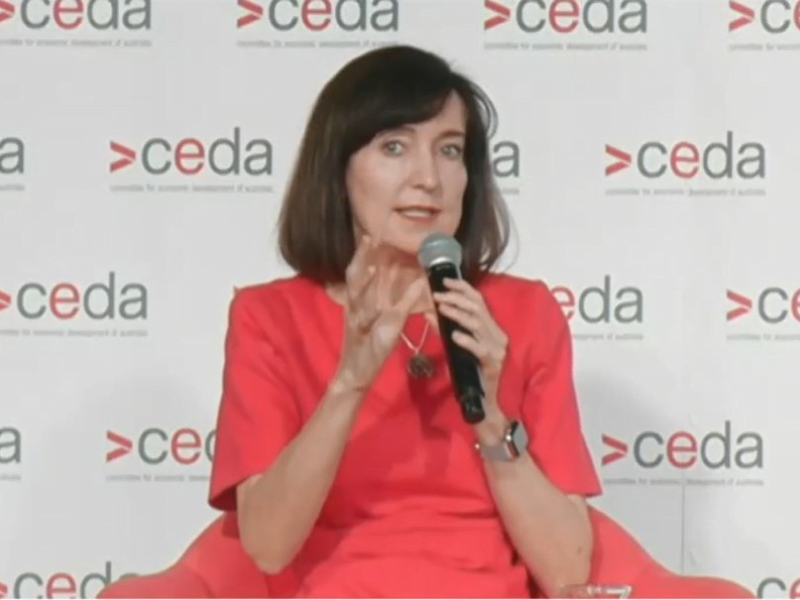South Australia will look to turn around its manufacturing slide with a new decadal strategy that puts an emphasis on place-based innovation, value-adding and strategically important sectors like defence, health, space and green hydrogen.
Launched by the Malinauskas government last week, the state’s 10-year Advanced Manufacturing Strategy sets ambitious targets to increase the share of manufacturing in the state’s economy from six per cent to 10 per cent in the next decade.
Increasing advanced manufacturing will drive more economic complexity, increase productivity, and allow the state to take better advantage of the transition to net-zero emissions, according to the strategy, which takes a “forward looking approach” to industrial strategy by singling out areas of comparative advantage and five specific enablers of growth.

“We want manufacturing to drive greater productivity and complexity in our economy by moving up the value chain exporting higher value-added goods and services to enable high living standards for communities across the state,” said Minister for Industry, Innovation and Science Susan Close.
Manufacturing sectors of competitive advantage are defence and space, renewable energy and green hydrogen, critical minerals and resources, food and beverage, forestry and timber, building and construction, and health and medical.
Innovation is considered one of six growth enablers alongside investment, capability, markets, workforce, and circular economy, for which key ongoing and recommended actions for government are outlined. Innovation is taken to mean “the constant search for new ways to be globally relevant and competitive”.
The new strategy, developed in close collaboration with University of Technology Sydney special innovation advisor Emeritus Professor Roy Green, recommends a new framework for coordinating innovation to facilitate “high levels of business engagement and investment across [innovation districts]”, while supporting knowledge transfer, new skills and new jobs.
At the end of March, a statewide innovation model to connect the innovation districts of Lot Fourteen, Tonsley, and Adelaide BioMed City with other manufacturing hubs like the Osborne Naval Shipyard, the Edinburgh Defence Precinct and the forthcoming Australian Space Park was announced to be under development.
“Building on the UK Catapult model, the South Australian Government will develop a new model for translational research by promoting connectedness between research facilities and engagement with manufacturers”, the manufacturing strategy says.
Successful place-based innovation programs, such as the UK Catapult model, show the facilities and their research can eventually feed more advanced manufacturing.
The Flinders University Factory of the Future is highlighted as “an excellent example of a world-class research factory involving researchers from Flinders University working seamlessly with BAE Systems Maritime Australia and other manufacturers to modernize and transform defence and other manufacturing through Industry 4.0 technologies”.
In 2022, MedTech and pharmaceutical industry growth centre MTPConnect was appointed as the first innovation intermediary for the Adelaide BioMed City over a three year period. Their aim is to is to “drive collaboration and knowledge transfer between researchers and industry in Innovation Districts”, according to the growth centre’s website.
There are currently 6,717 manufacturing businesses in South Australia, accounting for 20 per cent of the state’s value-added exports and 25 per cent of South Australian business expenditure on research and development.
The goal of increasing the share of manufacturing in the state’s economy to 10 per cent over the next decade is an attempt to reverse a declining trend over the last decade. Between 2011-12 and 2021-22, industry growth value-add fell from 9.7 per cent to 6.3 per cent.
In the Malinauskas government’s first state budget, two initiatives made under the Liberal government’s EXCITE innovation strategy regarding the innovation districts were cut.
This included a $3 million funding commitment to establish a second innovation and translation intermediary, along with a $6 million funding commitment to facilitate collaboration between industry and researchers at South Australian Innovation Districts.
The EXCITE strategy was intended to lay out innovation priorities in the decade to 2030 and place South Australia in the top quartile of the OECD rankings for key performance measures related to research and innovation by 2030.
Do you know more? Contact James Riley via Email.

